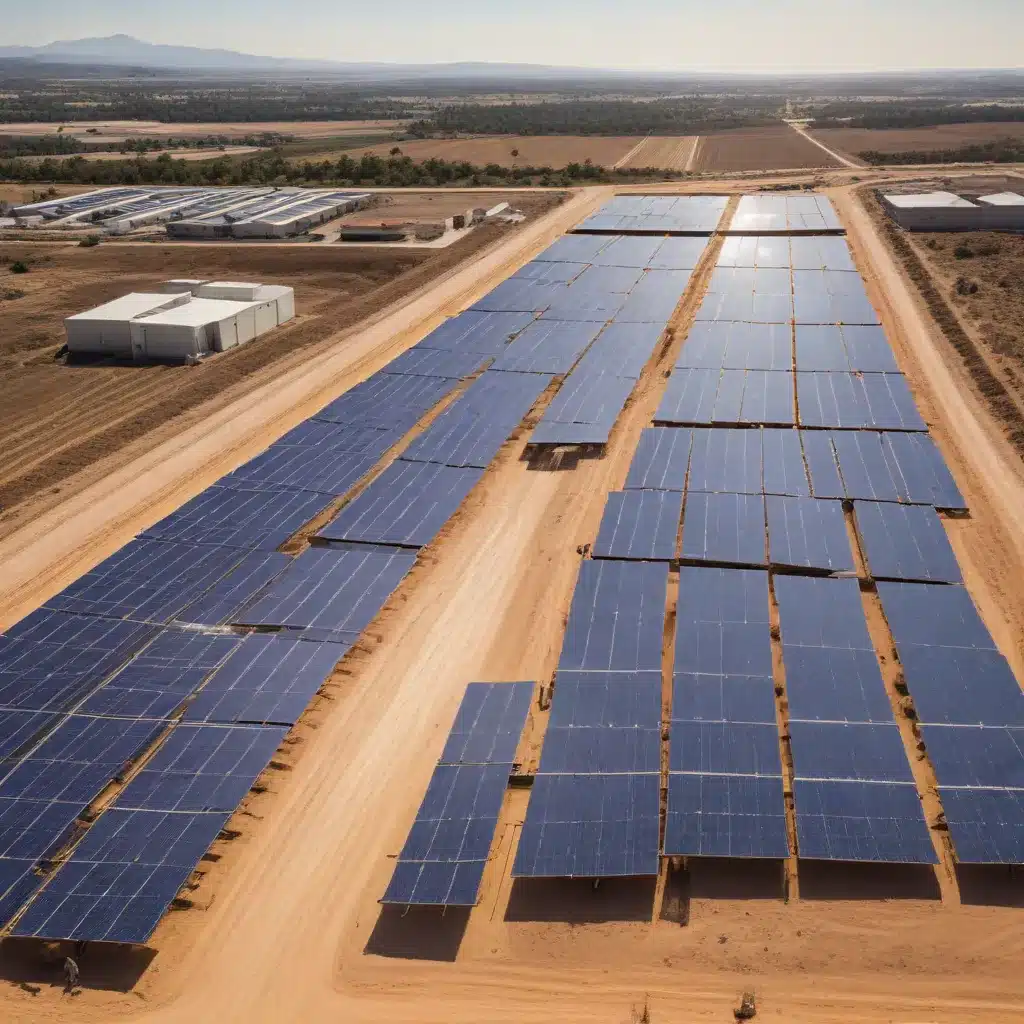
The world is in the midst of a renewable energy revolution, and solar power is at the forefront of this transformation. As European nations strive to achieve their ambitious climate goals, the integration of solar energy into industrial operations has emerged as a critical strategy for driving sustainable growth and reducing carbon emissions.
The Solar Energy Landscape
Trends in Solar Energy Adoption
Europe has witnessed a remarkable surge in solar energy adoption in recent years. Countries such as Germany, Italy, and Spain have led the way, with solar power playing an increasingly prominent role in their energy mixes. The European Union’s target of achieving at least a 55% reduction in greenhouse gas emissions by 2030 has further accelerated the push for renewable energy, with solar being a key component of this strategy.
Regulatory Landscape and Incentives
Governments across Europe have implemented a range of policies and incentives to encourage the adoption of solar energy. Feed-in tariffs, net metering schemes, and tax credits have been instrumental in driving investment and fostering the growth of the solar industry. Additionally, the EU’s Renewable Energy Directive and the European Green Deal have provided a robust regulatory framework to support the transition towards a sustainable energy future.
Evolving Solar Technologies
The solar energy sector has witnessed remarkable technological advancements in recent years. Photovoltaic (PV) panels have become more efficient, cost-effective, and durable, while concentrated solar power (CSP) systems have demonstrated their potential for large-scale energy generation. Innovations in energy storage, such as battery and thermal storage solutions, have further enhanced the capabilities of solar systems to provide reliable and consistent power.
Integrating Solar Energy into Industrial Operations
Assessing Energy Needs and Feasibility
The successful integration of solar energy into industrial operations begins with a comprehensive assessment of the facility’s energy requirements. Industrial players must carefully evaluate their energy consumption patterns, peak demand, and overall operational needs to determine the most suitable solar energy solution. This evaluation process involves analyzing the available space, local solar irradiation levels, and the potential for energy savings and cost reductions.
Designing Solar Energy Systems
Once the energy needs are understood, the next step is to design the solar energy system. This process involves selecting the appropriate solar panel technology, determining the optimal panel orientation and tilt, and integrating the system with the existing infrastructure. Engineers must also consider factors such as grid interconnection, energy storage, and backup power to ensure the seamless integration of solar energy into the industrial operations.
Operational Considerations
Integrating solar energy into industrial operations requires careful attention to operational aspects. Maintaining optimal system performance, energy management, and maintenance strategies are crucial to maximizing the benefits of solar power. Industrial players must also address issues related to energy load balancing, demand response, and grid integration to ensure the reliable and efficient operation of their solar energy systems.
Challenges and Barriers to Implementation
Technical Hurdles
While the advancements in solar technology have been impressive, some technical challenges remain. Factors such as intermittency, energy storage limitations, and grid integration complexities can pose significant obstacles to the widespread adoption of solar energy in industrial settings. Overcoming these technical hurdles requires ongoing research and development, as well as collaboration between industry players and policymakers.
Financial Considerations
The upfront capital investment required for solar energy systems can be a significant barrier for some industrial operations. However, the long-term cost savings, energy price stability, and potential revenue streams from Power Purchase Agreements (PPAs) and carbon offset programs can help offset these initial costs. Innovative financing solutions, such as green loans and leasing models, can also facilitate the adoption of solar energy in the industrial sector.
Organizational Readiness
Integrating solar energy into industrial operations often requires a shift in organizational culture and mindset. Overcoming resistance to change, addressing concerns about operational disruptions, and aligning with sustainability goals can be challenging. Effective change management strategies, employee engagement, and executive-level support are crucial in fostering a smooth transition towards solar energy integration.
Optimizing Solar Energy Integration
Maximizing Energy Efficiency
To achieve the full potential of solar energy integration, industrial players must focus on maximizing energy efficiency. This involves implementing energy-efficient technologies, optimizing production processes, and adopting smart energy management systems that can dynamically adjust to the solar energy generation profiles.
Leveraging Energy Storage Solutions
The integration of energy storage solutions, such as batteries and thermal storage, can significantly enhance the value of solar energy systems. By storing excess solar-generated electricity or thermal energy, industrial operations can mitigate the impact of intermittency and ensure a reliable and consistent power supply, even during periods of low solar irradiation.
Monitoring and Maintenance Strategies
Effective monitoring and maintenance strategies are essential for maintaining the optimal performance of solar energy systems. Industrial players must develop comprehensive preventive maintenance programs, implement real-time monitoring capabilities, and leverage predictive analytics to anticipate and address any issues that may arise, ensuring the long-term sustainability of their solar energy investments.
The integration of solar energy into industrial operations represents a pivotal step towards a more sustainable future. By harnessing the power of the sun, European industries can contribute to the region’s ambitious climate goals, unlock significant cost savings, and drive innovation in the renewable energy sector. As the solar energy landscape continues to evolve, the opportunities for industrial players to embrace this renewable technology and reap its benefits are more promising than ever before.






